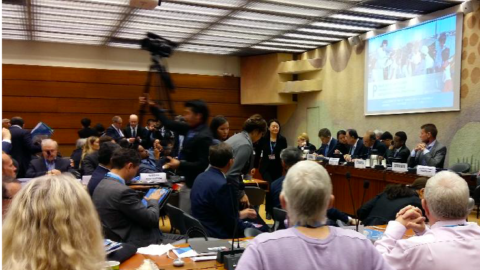
How transformational digital technologies can contribute to Leave No One Behind in UHC: the case of rare diseases
- ‘Rare diseases’ are ones not often seen by doctors, therefore not diagnosed and not properly treated. They affect around 400 million people worldwide. 400 diseases represent 98% of these cases, with a further 5,600 diseases making up the other 2%. Clearer definitions are needed.
- As the distance between patients and health centres increases, quality of life and life expectancy decrease. Digital technologies could help by making distance irrelevant through virtual visits.
- Dr Soumaya Swaminathan (Chief Scientist WHO) outlined how her division looks at new technologies, gathering evidence on emerging treatments and new technologies to see where and how countries could invest in new technologies to improve health outcomes. The vision is a global framework for rare diseases, with cloud-based data solutions, apps which identify patterns and create algorithms and accelerate diagnosis based on symptoms, social platforms where people living with rare diseases and specialised doctors can connect with each other, produce a rare disease encyclopaedia in various languages.
- People with rare diseases and their families often experience isolation and are stigmatised in various issues including healthcare, insurances, education, social care and employment. Technology can help overcome isolation by building digital platforms to connect patients with specialists, support and expand existing networks, and allow patients to virtually participate in classrooms. Artificial Intelligence would allow symptoms to be mapped and grouped, so people are provided with accurate diagnoses. The opportunities and benefits of digital technologies should be maximised by combining efforts.
- A panel session identified challenges and opportunities in digital health implementation:
- Self-testing/self-diagnosis become possible in diseases of high stigma
- This can be followed by treatment in the community rather than at the health centre
- Change management in the workforce is needed before the introduction of technology, especially in low and middle income countries, as it is a new form of thinking
- National digital health strategies are needed rather than piecemeal development or application